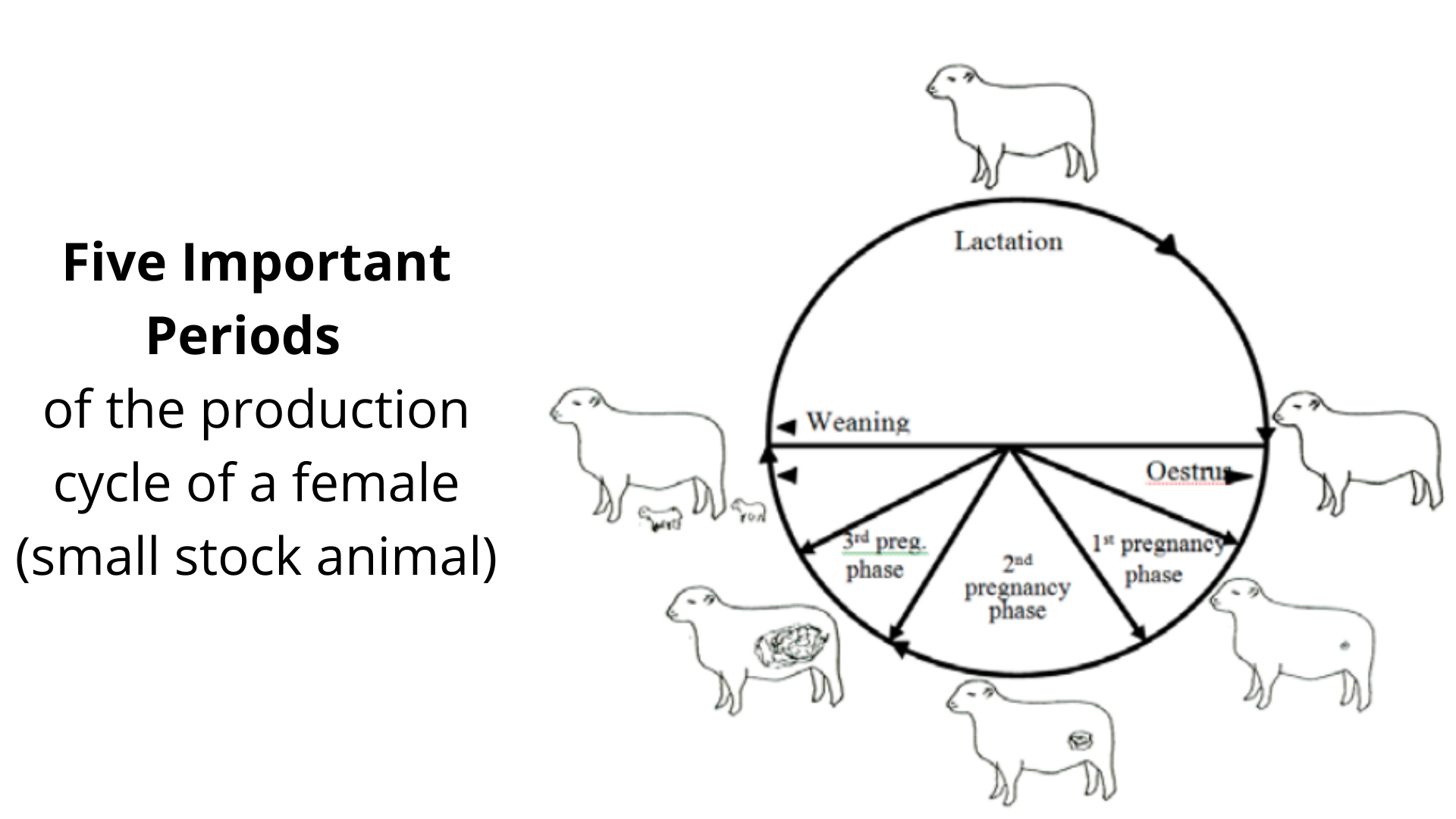It is all very well to know how much feed an animal or a herd of animals need. It is also useful to know how to formulate rations for these requirements and to know how to mix such rations. However, if feed is the most expensive input in a livestock production system then the management of the feed throughout the production cycle, where the correct nutrients are provided to the herd on an on-going basis, becomes crucial. This is known as “feed flow”. How does the farmer plan this annual feed flow?
Seasonal Production of Feed Ingredients
In South Africa there is no area where feed from the natural veld is available in the right quantities and quality all year round. However, with correct pasture management, this feed resource is the most inexpensive feed resource and should be used optimally. Where deficiencies in this resource occur, the farmer needs to supplement those nutrients that are lacking. It should also be remembered that the natural veld resource should be managed sustainably. That is why the word “optimal” is used and not “maximum”. You cannot expect to extract the maximum from the veld pasture without ruining it for the future. Thus, the correct stocking rates, camp rotation and resting should be used to manage the natural pasture resource for the future.
Feed Flow For Animal Requirements For Maintenance And Production
Determining the Nutrient Requirements Of The Production Herd
When planning the feed flow for an operation it is first necessary to determine the production cycle of the animal. In this way it becomes possible to ascertain the general requirements of the herd over time. This can then be matched to the provision of nutrients from the natural pasture at that same period and shortfalls can be determined.
There are five important periods that need special attention during the production cycle of a female small stock animal (sheep and goats):
Dry: this is the period between weaning the offspring and being bred. During this period, the female is regaining the weight lost while nursing the offspring. She must reach a satisfactory condition score before being bred again. However, the nutrient demand here is the lowest.
Mating: flushing can be used to increase ovulation rate. Flushing involves providing supplementary feeding 3 weeks before the male is introduced, and 3 weeks after they were introduced. If the herd is on the veld, flushing can be accomplished by putting the females onto lush pasture, or by feeding pellets or grain.
Early gestation (1st 100 days): foetus growth is slow during this period. A maintenance diet is enough, and no ill effects will be found if the females are grazing veld.
Late gestation (last trimester): foetal growth is very rapid, and the foetuses gain 70% of their birth weight in this 50-day period. Protein and energy requirements increase dramatically. In adverse weather conditions the farmer should provide adequate feed for the pregnant females, to avoid losing offspring, or to have offspring born in poor condition. During the 5th month of the gestation period, daily gains of the female should range from 0.1 to 1.2 kg.
Lactation: this is the most critical period. It is vital that the female’s requirements are met, as the production of sufficient milk of good quality ensures that the offspring are healthy, grow fast, and at the end of the day they produce more meat, which means more money in the farmer’s pocket.
Active growth stage of the young animal: A high quality feed should be fed to young animals because the requirements for growth are high and the rumen capacity at this stage is still a limiting factor. Poor nutrition during this stage can lead to permanent stunting of the animal. Differences of nearly 20 percent in mature body mass were obtained as a result of differences in nutritional treatment prior to four months of age. Also, the influence of pre- and postnatal treatments was added. This means that if the mother is fed well in the last few weeks of pregnancy, and the young that are born are strong, then, if the young are also fed well up to weaning, the final result will be even stronger and healthier offspring.

Determining the nutrient provision of the pasture It is now necessary to match these to the nutritive value of the natural pasture and see if any gaps occur. If we assume that the small stock herd mentioned above is being produced in a summer rainfall area such as the Northern parts of South Africa, the following pattern emerges:
Filling the Gaps
The nutrient requirements of the herd and the nutrient provision of the natural pasture is now super-imposed on each other. Where a shortfall of nutrients occurs, the pasture can be supplemented with either energy rich licks, or protein-rich licks as required. As a general rule a salt lick containing minerals should be provided all year round.
Keep in mind that with ruminants the farmer is actually feeding the micro-organisms in the rumen and not the ruminant animal itself. Therefore, all feed management decisions should keep the livelihood of the micro-organisms in mind. For example, any changes in feed should be done slowly over at least a seven-day period. Furthermore, inexpensive Non-Protein Nitrogen sources such as urea (or sterilised chicken litter) can be used instead of expensive protein resources such as Lucerne, fish meal etc. This is because the micro-organisms are capable of using these Non-Protein Nitrogen resources in the synthesis of amino acids and proteins.

